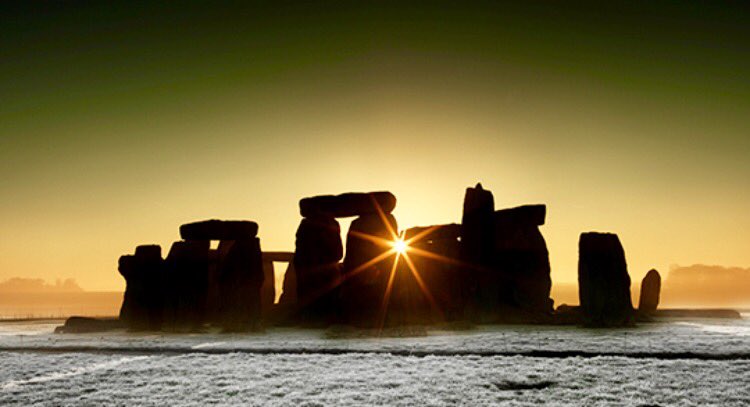
For many of us, winter has made itself known for a few weeks now.
But according to astronomers, December 21st marks the start of winter.
Here comes the cold and dark: The winter solstice, the shortest day of the year in the Northern Hemisphere, occurs early Wednesday morning.
The solstice happens at the same instant everywhere on Earth. In the U.S., it happens at 5:44 a.m. EST Wednesday (or 4:44 a.m. CT, 3:44 a.m. MT and 2:44 a.m. PT).
After the solstice, the days slowly start to get longer again.
The winter solstice is the exact moment that the Northern Hemisphere is tilted the farthest it ever gets from the sun. During the Northern Hemisphere's winter, the land north of the equator is tilted away from the sun. This lowers the amount of the sun's warming energy that reaches Earth, hence, winter!
It's the opposite in the Southern Hemisphere, where Dec. 21 marks the beginning of astronomical summer.
On the winter solstice, places south of the equator have day lengths greater than 12 hours, while all locations north of the equator have day lengths less than 12 hours, AccuWeather said.
One of the most famous solstice celebrations occurs at the ancient Stonehenge ruins in Wiltshire, England, where druids, pagans and other revelers gather each year to celebrate the event.

The winter and summer solstices, along with the equinoxes, loom large in myth and folklore.
"Culturally, the solstices and equinoxes are typically used to denote either the beginnings of the seasons or the center points of the seasons," as in England, says Rick Kline, with the Spacecraft Planetary Imaging Facility at Cornell University in Ithaca, N.Y.
"Christmas, Hanukkah, Kwanzaa and other holidays have arisen out of the solstices, equinoxes and the midpoints between them," he said.
The solstice marks the astronomical beginning of winter, while meteorologists view winter (the three coldest months) as starting Dec. 1. The day of the solstice, however, isn't typically the coldest day of the year. There is a weeks-long lag between the solstice and the coldest average temperature for most spots in the USA.
This lag in temperature occurs because even though the amount of daylight continues to increase, the Earth's surface continues to lose more heat than it receives from the sun. In most locations across the country, the coldest weather occurs around two or three weeks later, in early to mid-January.
For example, the coldest days in Boston, on average, are Jan. 17-26. In Chicago, it's Jan. 17-20, and in Miami, it's Jan. 2-22. At the end of January, more heat finally begins arriving than leaving, and days slowly start to warm up.
The Earth's tilted axis causes us to have summer and winter. The tilt is probably the result of collisions with various proto-planets and other massive objects during the formation of the solar system billions of years ago, according to NASA.
http://www.usatoday.com/story/tech/sciencefair/2016/12/20/winter-solstice/95656640/











